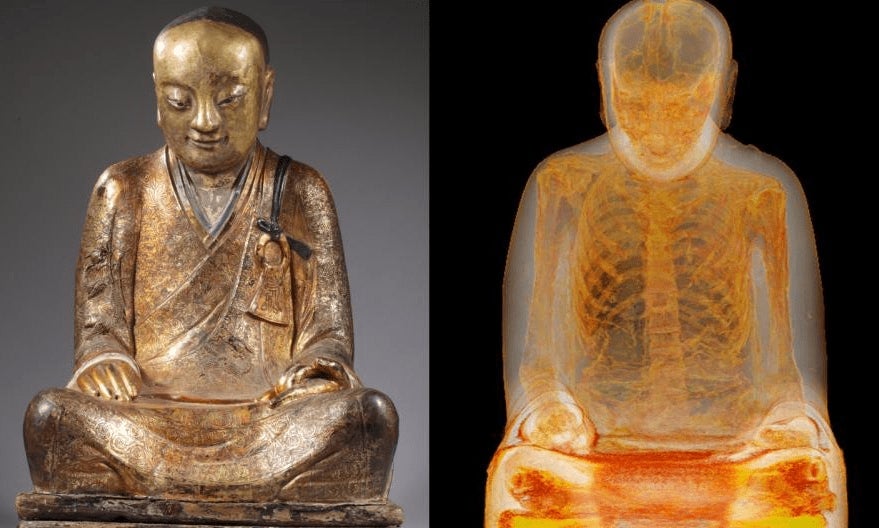A group of Chinese villagers traveled to Amsterdam to ask for the return of a mummified monk
A thousand years ago, a monk and revered healer known as Qisan Zhang died after allegedly starving himself to death. His remains were preserved and then placed in an unusual golden casket, in the shape of a sitting, smiling Buddha. For centuries, townspeople in the eastern Chinese county of Yongchun, in Fujian province, worshipped at his feet—until, in late 1995, the mummy, and its casket, were stolen.


A thousand years ago, a monk and revered healer known as Qisan Zhang died after allegedly starving himself to death. His remains were preserved and then placed in an unusual golden casket, in the shape of a sitting, smiling Buddha. For centuries, townspeople in the eastern Chinese county of Yongchun, in Fujian province, worshipped at his feet—until, in late 1995, the mummy, and its casket, were stolen.
Now, members of the village where it originated are asking for it back, after it materialized in 2015 at a mummy exhibition in Budapest’s natural history museum.
Six people traveled from China to the Netherlands to appeal to an Amsterdam judge for the return of their stolen idol, which they say was bought by Dutch collector Oscar van Overeem in Hong Kong in 1996. At the Amsterdam district court yesterday (Oct. 31), village spokesman Lin Wen Qing spoke through an interpreter. “We grew up with the statue. He was there day and night. He is our spiritual leader,” he said, according to AFP. “For us, it is the most important thing to have him back.”
In court, van Overeem said that he had swapped the statue with a Chinese collector in 2015, and was happy at the time to hear that it would be returning to China. He claimed not to know the identity of the person making the swap, nor the current whereabouts of the statue, known as the Zhanggong patriarch.
A ruling is expected on Dec. 12—and China is watching closely. This case could be one of the first successful retrievals of Chinese artifacts in court, rather than through diplomatic channels. The country’s government has campaigned in recent years against the sale of artifacts it believes to have been stolen, either by Western powers in the 19th century or via more recent “liftings,” such as with the Zhanggong patriarch.